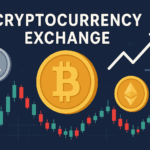Decentralized Finance, or DeFi, continues to reshape the global financial landscape, offering an open, permissionless, and transparent alternative to traditional financial systems. Decentralized Finance (DeFi) Growth in 2024. As DeFi enters its next phase of evolution in 2024, the sector’s growth is marked by new technologies, innovative projects, and increased adoption across diverse markets.
1. Introduction to Decentralized Finance
DeFi refers to blockchain-based platforms and applications designed to recreate and enhance traditional financial services—like lending, borrowing, trading, and saving—without the need for intermediaries. Powered by smart contracts, DeFi eliminates central authority reliance, providing users with autonomy over their assets.
Key benefits include:
- Financial Inclusion: Accessible to anyone with an internet connection.
- Transparency: All transactions are recorded on public blockchains.
- Programmability: Smart contracts automate processes, reducing inefficiencies.
2. The Rapid Expansion of DeFi
2.1. TVL (Total Value Locked) Milestones
In 2024, the Total Value Locked in DeFi platforms has surpassed $200 billion, showcasing exponential growth. Major contributors include Ethereum, the pioneer platform, and newer blockchains like Solana, Avalanche, and Binance Smart Chain, which offer faster transactions and lower fees.
2.2. Layer-2 Solutions
Scalability challenges on Ethereum have led to the rise of Layer-2 solutions like Arbitrum, Optimism, and zkSync, significantly reducing transaction costs and boosting user adoption.
3. DeFi Innovations Driving Growth
3.1. Real-World Asset Tokenization
DeFi platforms are now tokenizing real-world assets like real estate, art, and stocks, unlocking liquidity and enabling fractional ownership. Projects like MakerDAO have introduced tokenized treasury bills, further blurring the lines between DeFi and traditional finance.
3.2. Cross-Chain Interoperability
Protocols such as Polkadot and Cosmos enable seamless asset transfer across different blockchains, addressing fragmentation in the DeFi space. This interoperability fosters collaboration between ecosystems and enhances liquidity.
3.3. Institutional Adoption
Institutions are increasingly exploring DeFi through hybrid models, combining decentralized protocols with regulatory compliance. Platforms like Aave Arc allow whitelisted institutions to participate in DeFi, opening the doors for large-scale capital inflows.
4. Challenges and Solutions in DeFi
4.1. Security Concerns
Security remains a critical challenge, with DeFi platforms facing frequent exploits and rug pulls. Innovations in on-chain insurance, bug bounties, and third-party audits are mitigating risks.
4.2. Regulatory Hurdles
Global regulators are scrutinizing DeFi, raising concerns over compliance, taxation, and consumer protection. Frameworks like the Markets in Crypto-Assets Regulation (MiCA) in the EU aim to strike a balance between innovation and oversight.
4.3. Scalability Issues
The growing demand for DeFi services often leads to network congestion. Layer-2 scaling and alternative blockchains are crucial to maintaining user experience.
5. The Role of CryptoExchange4U in DeFi Growth
CryptoExchange4U is at the forefront of promoting DeFi adoption by:
- Offering Seamless Integration: The platform supports trading of native tokens from leading DeFi projects, enabling users to diversify their portfolios.
- DeFi Education: Through webinars and blogs, educates users about DeFi’s potential and risks, bridging the knowledge gap.
- Liquidity Solutions: By partnering with DeFi protocols, cryptoexchange provides liquidity and staking options, enhancing user participation.
6. DeFi Trends to Watch in 2024
6.1. AI Integration
Artificial Intelligence is revolutionizing DeFi by enabling predictive analytics, dynamic pricing, and smart contract optimization.
6.2. Decentralized Autonomous Organizations (DAOs)
DAOs are becoming integral to governance in DeFi projects, empowering communities with decision-making authority.
6.3. Sustainable DeFi
Eco-friendly blockchain solutions are gaining traction, reducing the environmental impact of DeFi operations.
7. Conclusion: The Future of DeFi
Decentralized Finance is more than a trend; it’s a movement redefining access to financial services. Platforms like CryptoExchange4U are pivotal in driving adoption, ensuring users benefit from this financial revolution. As innovations continue and barriers are addressed, DeFi holds the promise of a truly inclusive global economy.
Whether you’re a seasoned investor or new to the crypto space, 2024 presents an exciting opportunity to explore and engage with the dynamic world of DeFi.






















0 Comments